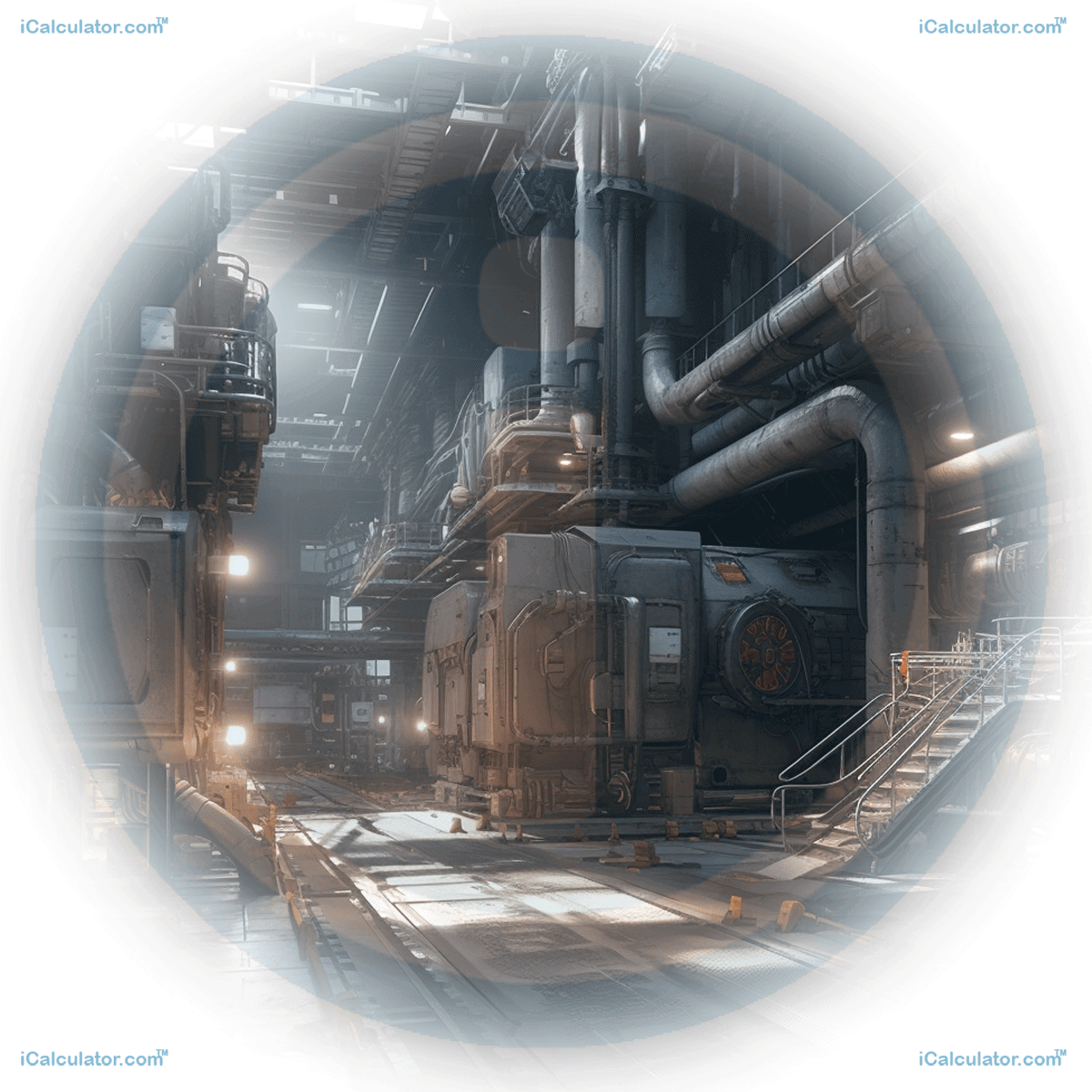Menu
Mechanical Quality Factor Calculator
Welcome to this engineering tutorial where we will explore the concept of the mechanical quality factor (Q-factor) and its calculation. The mechanical quality factor is a crucial parameter in engineering, particularly in systems that involve resonance, damping, or energy transfer. In this tutorial, we will introduce the concept, share interesting facts, explain the formula for calculating the mechanical quality factor, provide a real-life example, and equip you with the knowledge to determine the Q-factor in various applications.
| Mass (M) | |
| Spring constant (k) | |
| Damping coefficient (D) |
| Quality Factor (Q) = |
Please provide a rating, it takes seconds and helps us to keep this resource free for all to use

Interesting Facts about the Mechanical Quality Factor
Before we dive into the calculations, let's discover some fascinating facts about the mechanical quality factor:
- The mechanical quality factor, often denoted as Q-factor, is a dimensionless parameter that characterizes the energy loss and resonant behavior of a system.
- It is widely used in various fields of engineering, including mechanical, electrical, and acoustic systems.
- The Q-factor describes the relationship between the energy stored in a system and the energy dissipated due to damping.
- A high Q-factor implies low energy dissipation, indicating a system with efficient energy storage and minimal loss.
- The Q-factor is influenced by factors such as material properties, geometry, damping mechanisms, and external influences.
- It plays a crucial role in applications such as filters, oscillators, resonators, antennas, and acoustic devices.
Formula for Calculating the Mechanical Quality Factor
The mechanical quality factor (Q-factor) can be calculated using the following formula:
Q = 2π × f0 × (Energy Stored / Energy Dissipated)
Where:
- Q is the mechanical quality factor
- f0 is the resonant frequency of the system
- Energy Stored represents the energy stored in the system
- Energy Dissipated represents the energy dissipated or lost in the system
The Q-factor provides valuable information about the efficiency, damping, and resonance behavior of a system. It relates the resonant frequency, energy stored, and energy dissipated to characterize the system's response.
Example: Real-Life Application of the Mechanical Quality Factor
Let's consider an example to better understand how the mechanical quality factor is applied in real-life engineering scenarios. Suppose we have a resonant circuit with a resonant frequency (f0) of 1 MHz. The energy stored in the system is 100 millijoules, and the energy dissipated is 2 millijoules.
To calculate the mechanical quality factor (Q-factor) of the resonant circuit, we can use the formula:
Q = 2π × f0 × (Energy Stored / Energy Dissipated)
Substituting the given values into the formula:
Q = 2π × 1 MHz × (100 mJ / 2 mJ)
Simplifying the equation:
Q = 2π × 1 MHz × 50
Calculating the value:
Q ≈ 314.16
In this example, the mechanical quality factor (Q-factor) of the resonant circuit is approximately 314.16. This indicates that the system has a high Q-factor, implying efficient energy storage and minimal energy dissipation. Such a high Q-factor is desirable in applications where resonance and minimal energy loss are essential, such as in high-performance filters or resonators.
Real-life engineering applications of the mechanical quality factor can be found in various domains. In the field of electronics, Q-factors are crucial in the design and analysis of resonant circuits, antennas, and oscillators. Engineers use the Q-factor to optimize the performance of these systems by minimizing energy loss and maximizing selectivity.
In acoustics, the Q-factor is significant in the design of musical instruments, speakers, and sound systems. It helps characterize the resonance and damping behavior of these systems, enabling engineers to fine-tune their performance and achieve desired sound quality.
The mechanical quality factor also finds application in mechanical engineering, particularly in the design of damping systems, vibration isolators, and shock absorbers. Engineers use the Q-factor to optimize the damping characteristics of these systems, ensuring effective energy dissipation and vibration control.
Furthermore, the Q-factor is relevant in the field of optics for analyzing the performance of optical resonators, lasers, and filters. Engineers leverage the Q-factor to assess the optical losses and efficiency of these devices, allowing for precise control and manipulation of light waves.
In summary, understanding the mechanical quality factor (Q-factor) is crucial in engineering disciplines. By utilizing the formula Q = 2π × f0 × (Energy Stored / Energy Dissipated), engineers can calculate the Q-factor and gain insights into the energy storage, energy dissipation, and resonance behavior of a system. This knowledge empowers engineers to design and optimize systems with efficient energy transfer, minimal loss, and desired performance characteristics.
Now that you have learned about the mechanical quality factor, you can apply this knowledge to various engineering projects and calculations. Whether you are working with resonant circuits, acoustic systems, mechanical damping, or optical devices, understanding and manipulating the Q-factor will help you achieve optimal performance and efficiency in your designs.
Thank you for going through this tutorial. If you have any further questions, feel free to ask. Happy engineering!
Engineering Calculators
You may also find the following Engineering calculators useful.
- Youngs Modulus Spring Resonant Frequency Calulator
- Capacitor Color Code Calculator
- Microstrip Line Calculator
- Metal Bar Weight Calculator
- Plate And Rolled Capacitors Capacitance Calculator
- Wheel And Tire Motion Calculator
- Volume Of Conductor Calulator
- Triangle Stepping Stone Calculator
- Mah Power Consumption Calculator
- Transportation Highways Horizontal Curve Calculator
- Ic 555 Timer Monostable Delay And Timeout Calculator
- Isentropic Flow Relation Between Pressure And Total Pressure Calculator
- Inverse Discrete Fourier Transform Calculator
- Speaker Decibel Change From Voltage Calculator
- Inductance For Spiral Flat Coils Calculator
- Water Pumping Cost Calulator
- Kilowatts To Electric Horsepower Calculator
- Concrete Driveway Cost Calculator
- Led Series Resistor Calculator
- Wire Diameter Calulator